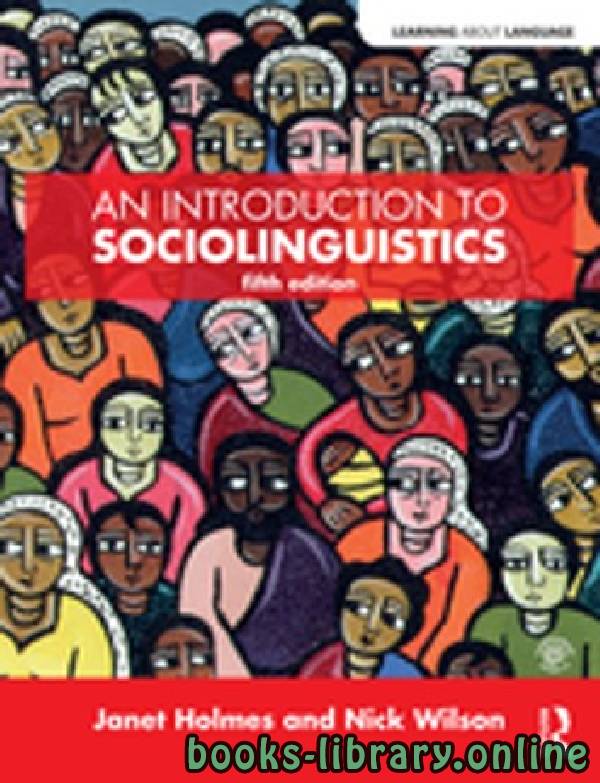❞Janet Holmes❝ المؤلِّف - المكتبة
- ❞Janet Holmes❝ المؤلِّف - المكتبة
█ حصرياً جميع الاقتباسات من أعمال المؤلِّف ❞ Janet Holmes ❝ أقوال فقرات هامة مراجعات 2025 ❰ له مجموعة الإنجازات والمؤلفات أبرزها An_Introduction_to_Sociolinguistics ❱
إنضم الآن وتصفح بدون إعلانات
له مجموعة من الإنجازات والمؤلفات أبرزها ❞ An_Introduction_to_Sociolinguistics ❝
#20K
20 مشاهدة هذا اليوم#23K
7 مشاهدة هذا الشهر#15K
5K إجمالي المشاهدات كتاب An_Introduction_to_Sociolinguistics 2013
An_Introduction_to_Sociolinguistics_by_J An Introduction to Sociolinguistics Fourth Edition vii Preface xii Author’s Acknowledgements xvi Publisher’s Acknowledgements xvii 1 What do sociolinguists study? 1 Section I Multilingual Speech Communities 17 2 Language choice in multilingual communities 19 3 Language maintenance and shift 53 4 Linguistic varieties and multilingual nations 76 5 National languages and language planning 100 Section II Language Variation: Focus on Users 129 6 Regional and social dialects 131 7 Gender and age 159 8 Ethnicity and social networks 186 9 Language change 206 Section III Language Variation: Focus on Uses 237 10 Style, context and register 239 11 Speech functions, politeness and cross-cultural communication 274 12 Gender, politeness and stereotypes 301 13 Language, cognition and culture 337 14 Analysing discourse 363 15 Attitudes and applications 409 16 Conclusion 439 References 454 Appendix: phonetic symbols 475 Glossary 477 Index 479 Brief Contents Section I Multilingual Speech Communities 17 2 Language choice in multilingual communities 19 C hoosing your variety or code 19 D iglossia 2 7 C ode-switching or code-mixing 34 3 Language maintenance and shift 53 L anguage shift in different communities 53 L anguage death and language loss 58 F actors contributing to language shift 60 H ow can a minority language be maintained? 64 L anguage revival 67 4 Linguistic varieties and multilingual nations 76 V ernacular languages 77 S tandard languages 78 L ingua francas 8 2 P idgins and creoles 85 5 National languages and language planning 100 N ational and official languages 102 P lanning for a national official language 1 07 D eveloping a standard variety in Norway 111 T he linguist’s role in language planning 1 15 Contents Contents Section II Language Variation: Focus on Users 129 6 Regional and social dialects 131 R egional variation 1 32 S ocial variation 1 39 S ocial dialects 1 40 7 Gender and age 159 G ender-exclusive speech differences: highly structured communities 1 59 G ender-preferential speech features: social dialect research 1 63 G ender and social class 1 64 E xplanations of women’s linguistic behaviour 1 67 A ge-graded features of speech 1 75 A ge and social dialect data 1 77 A ge grading and language change 180 8 Ethnicity and social networks 186 E thnicity 1 86 S ocial networks 1 96 9 Language change 206 V ariation and change 207 H ow do changes spread? 2 14 H ow do we study language change? 2 19 R easons for language change 2 22
عدد المشاهدات
6193
عدد الصفحات
513
نماذج من أعمال Janet Holmes:


